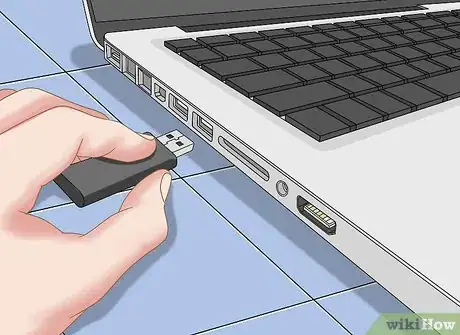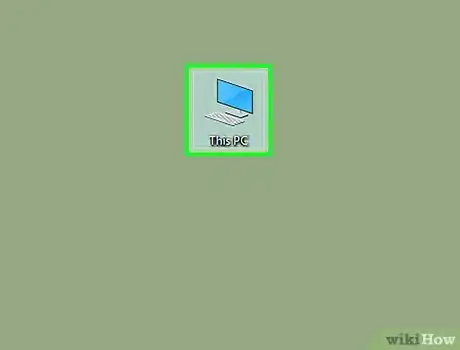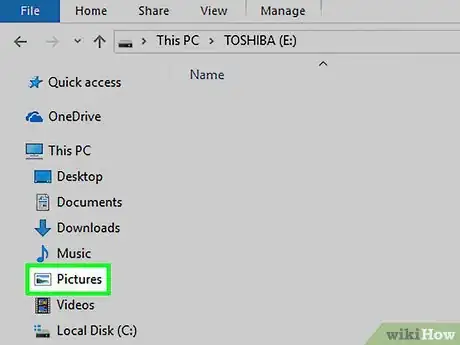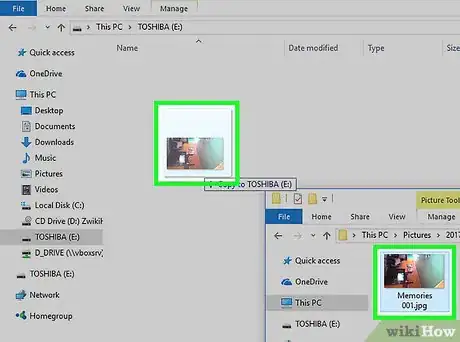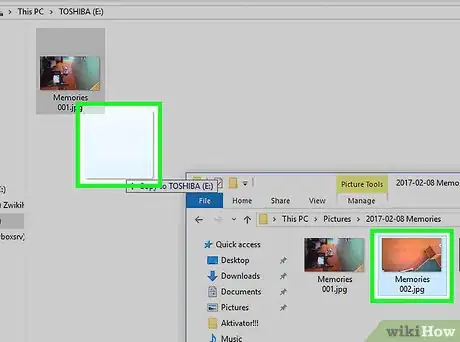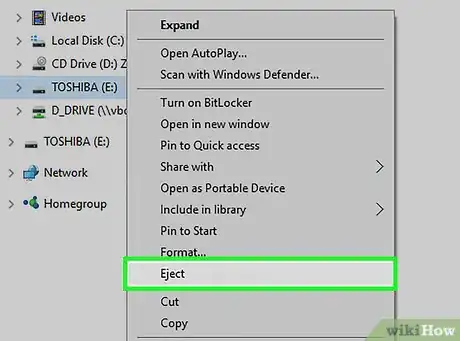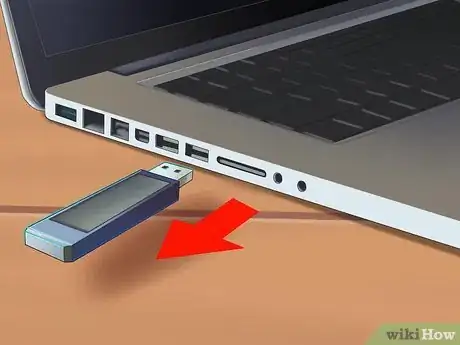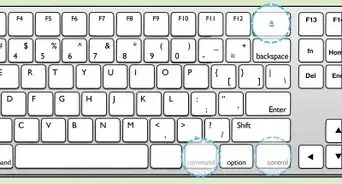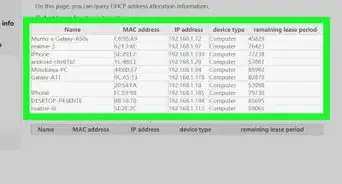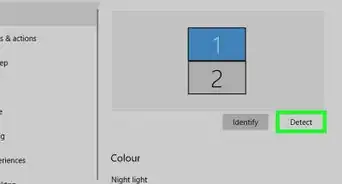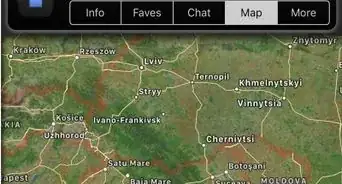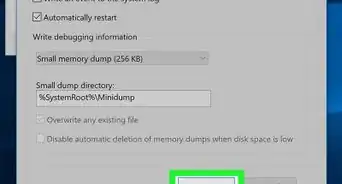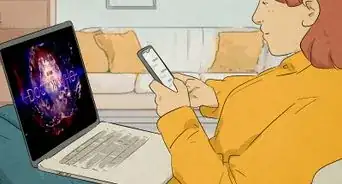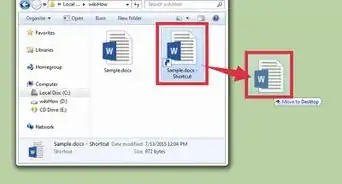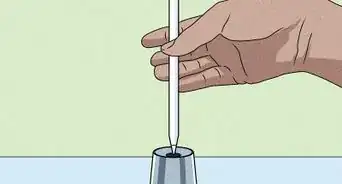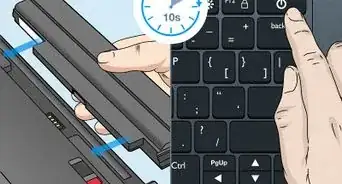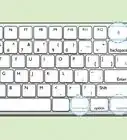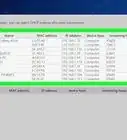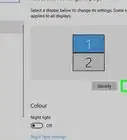This article was written by Luigi Oppido and by wikiHow staff writer, Jack Lloyd. Luigi Oppido is the Owner and Operator of Pleasure Point Computers in Santa Cruz, California. Luigi has over 25 years of experience in general computer repair, data recovery, virus removal, and upgrades. He is also the host of the Computer Man Show! broadcasted on KSQD covering central California for over two years.
The wikiHow Tech Team also followed the article's instructions and verified that they work.
This article has been viewed 545,197 times.
This wikiHow teaches you how to copy pictures from your computer to your USB flash drive.
Steps
On Mac
-
1Plug your flash drive into your Mac. Your computer most likely has rectangular holes, called USB ports, on the sides of its casing (for laptops) or behind the monitor, on the side of the keyboard, or on the CPU for a desktop. You'll insert your flash drive into a USB port.
- USB ports have a piece of plastic in the top of their slots; you'll also notice that the USB end of your flash drive has a plastic segment. You'll need to insert the drive into your computer's USB port with the plastic segment side of the flash drive on the bottom.
- If your flash drive won't fit into your computer's USB port, turn it over.
- Unfortunately, some Macs don't have USB ports.
-
2Open Finder. This app is a blue face icon in your Mac's dock, which is usually at the bottom of the screen.
- Your flash drive may actually open as soon as you plug it into your computer, in which case you won't have to open the Finder.
Advertisement -
3Click the flash drive's name. It will be toward the bottom of the left-side panel of the Finder window, below the "Devices" heading. Doing so will open your flash drive's window, into which you may drag your pictures.
- If your flash drive opened when you plugged it into your Mac, skip this step.
-
4Open Photos. This app, which has a multicolored pinwheel on a white background as its icon, is also in your dock.
-
5Click and drag a photo into the flash drive window. Once you let go of the mouse, your photo will "drop" into the flash drive window, which means it will copy from your computer into the drive.
- Photos aren't moved from your computer to your flash drive by default; they're copied instead. If you want to move the photos off of your computer, you'll need to delete them from your computer after moving them to the flash drive window.
- You can hold down ⇧ Shift while clicking photos to select multiple photos, or you can click and drag your cursor across as many photos as you wish to copy.
- To copy ALL of your photos, press ⌘ Command and A to select all, go to File, then Export, then select your flash drive from the export options.
-
6Repeat this process for all applicable photos. You can put as many photos on your flash drive as the flash drive will allow.
- For example, a flash drive with 64 gigabytes' worth of space can store roughly 64 gigabytes' worth of photos.
-
7Click the "Eject" button. It's the upward-facing arrow next to the flash drive's name in the Finder window. Doing so will ensure that, when you remove your USB flash drive, your files will remain uncorrupted.
-
8Unplug your flash drive. Your pictures are now on your flash drive. If you'd like to move the photos from your flash drive to another computer, you only need to plug your flash drive into a new computer and then drag the photos from your drive to the computer's Pictures folder.
On Windows
-
1Plug your flash drive into your Windows PC. Your computer most likely has rectangular holes, called USB ports, on the sides of its casing (for laptops) or behind the monitor, on the side of the keyboard, or on the CPU for a desktop. You'll insert your flash drive into a USB port.
- USB ports have a piece of plastic in the top of their slots; you'll also notice that the USB end of your flash drive has a plastic segment. You'll need to insert the drive into your computer's USB port with the plastic segment side of the flash drive on the bottom.
- If your flash drive won't fit into your computer's USB port, turn it over.
-
2Open My PC. This app's icon resembles a computer monitor. It should be on your desktop, though you can also open it from within the Start menu by clicking the Start icon in the bottom-left corner of the screen and then clicking My PC.
- On some computers, My PC is called "My Computer" instead.
- Windows may ask if you want to determine what to do with your USB flash drive. Clicking OK when prompted will allow you to select a Open folder to view files option which will open your flash drive's window.
-
3Double-click your flash drive's name. It's under the "Devices and drives" section in the middle of the window.
- If your flash drive opened when you plugged it into your PC, skip this step.
-
4Right-click Pictures. This folder is in the far-left pane of the My PC window.
- If your flash drive's window opened when you plugged it into your PC, left-click Pictures.
-
5Click Open in new window. Doing so will open a second window to display your computer's "Pictures" folder, which is your computer's default picture storage area.
- If your flash drive opened when you plugged it into your PC, skip this step.
-
6Click and drag a photo into the flash drive window. Once you let go of the mouse, your photo will "drop" into the flash drive window, which means it will copy from your computer into the drive.
- Photos aren't moved from your computer to your flash drive by default; they're copied instead. If you want to move the photos off of your computer, you'll need to delete them from your computer after moving them to the flash drive window.
- You can hold down Ctrl while clicking photos to select multiple photos, or you can click and drag your cursor across as many photos as you wish to copy.
EXPERT TIPLuigi Oppido is the Owner and Operator of Pleasure Point Computers in Santa Cruz, California. Luigi has over 25 years of experience in general computer repair, data recovery, virus removal, and upgrades. He is also the host of the Computer Man Show! broadcasted on KSQD covering central California for over two years.Computer & Tech Specialist
 Luigi Oppido
Luigi Oppido
Computer & Tech SpecialistYou can also select multiple photos at once. Click on Windows Explorer and view the flash drive, which should be empty. Then, open a new Windows Explorer window and navigate to find your photos. In that window, select all of the photos that you want to transfer to the flash drive. Left-click and hold, then drag the photos over to the second window.
-
7Repeat this process for all applicable photos. You can put as many photos on your flash drive as the flash drive will allow.
- For example, a flash drive with 64 gigabytes' worth of space can store roughly 64 gigabytes' worth of photos.
-
8Right-click the flash drive icon in My PC. It's the icon below the "Devices and drives" heading.
-
9Click Eject. Doing so will ensure that, when you remove your USB flash drive, your files will remain uncorrupted.
-
10Unplug your flash drive. Your pictures are now on your flash drive. If you'd like to move the photos from your flash drive to another computer, you only need to plug your flash drive into a new computer and then drag the photos from your drive to the computer's Pictures folder.
Community Q&A
-
QuestionOnce you have photos transferred to a flash drive, how do you delete them from your computer without deleting them from the drive?
 Community AnswerOnce the photos are on your flash drive, no action you take on your computer exclusive of the flash drive will affect the files on the drive. For example, you could upload a photo named "mydog1" to your flash drive, and after it finished copying, you could delete the same photo from your computer without the photo disappearing from your drive.
Community AnswerOnce the photos are on your flash drive, no action you take on your computer exclusive of the flash drive will affect the files on the drive. For example, you could upload a photo named "mydog1" to your flash drive, and after it finished copying, you could delete the same photo from your computer without the photo disappearing from your drive. -
QuestionHow can I remove photos from a phone to a flash drive?
 Community AnswerYou can either upload the photos to a cloud storage service (e.g., Google Drive) and then download them onto your flash drive from there by accessing the cloud storage service on a computer, or you can purchase a third-party adapter that has a USB port on one end and a phone charger plug-in on the other end.
Community AnswerYou can either upload the photos to a cloud storage service (e.g., Google Drive) and then download them onto your flash drive from there by accessing the cloud storage service on a computer, or you can purchase a third-party adapter that has a USB port on one end and a phone charger plug-in on the other end. -
QuestionWhy did my photos get shuffled out of order when I moved them?
 Community AnswerYour default sorting options for a flash drive may be different than your computer's sort options. To fix this, figure out how your photos are arranged on your computer (e.g., by date or by type) and then right-click (or two-finger click) white space in your flash drive's window, select your computer's version of the "Sort By" option, and select the appropriate option.
Community AnswerYour default sorting options for a flash drive may be different than your computer's sort options. To fix this, figure out how your photos are arranged on your computer (e.g., by date or by type) and then right-click (or two-finger click) white space in your flash drive's window, select your computer's version of the "Sort By" option, and select the appropriate option.
Warnings
- Failing to safely eject your USB drive before removing it from your computer may result in corrupted or lost files.⧼thumbs_response⧽
References
About This Article
1. Connect the flash drive to the computer.
2. Open Finder.
3. Click the flash drive.
4. Open the Photos app.
5. Drag photos to the flash drive.
6. Click the Eject button when you're finished.
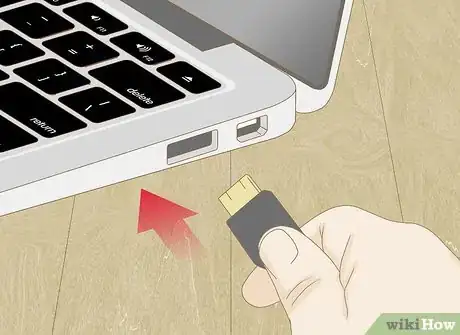
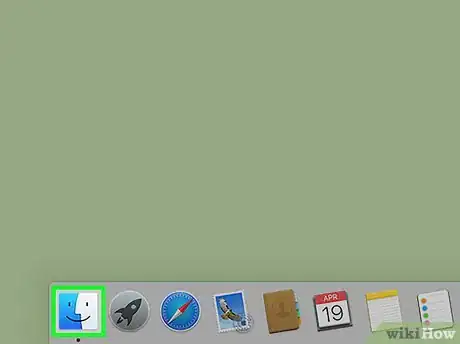
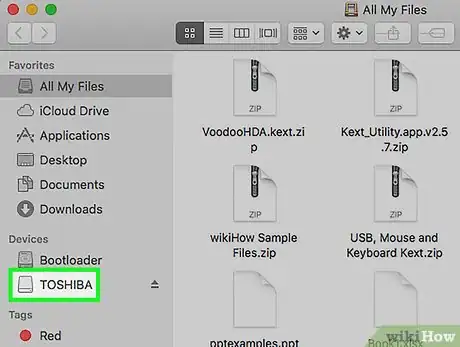
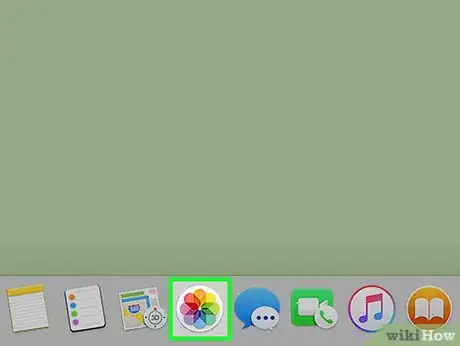
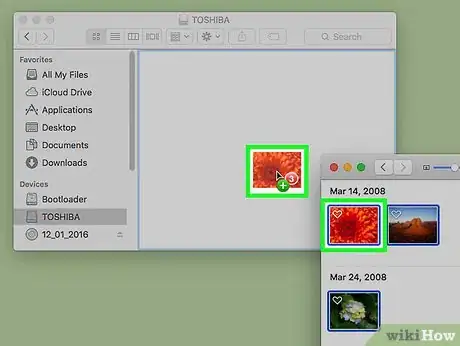
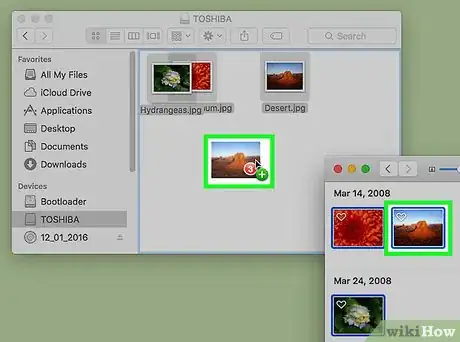

-Step-1.webp)
